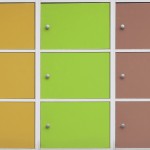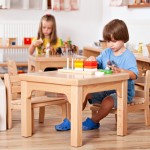With the rise in Autism and Autism Spectrum disorders over the past 30 years, it is imperative that designers, educators, and museum professionals rethink the designed environment to meet the needs of both general and special needs audiences. For the next several weeks, Cloudberry Studio will share insights about different elements of design for Autism, with the aim to start conversations around this important topic.
Autism is a developmental disorder that alters the nerve cells and synapses that collect and organize sensory information (sights, sounds, textures, smells, and tastes) within the brain. How this occurs is not well understood, but we do know children with Autism are highly sensitive to environmental stimuli, with a tendency to overreact or underreact. Symptoms become apparent in children before three years of age, and typically include impaired social interaction and communication skills (both verbal and non-verbal), as well as restricted or repetitive behavior. There is no known cure for Autism, and treatment focuses on reducing developmental deficits and stresses, in order to increase quality of life and independence.
While it may not be appropriate (or even possible) to modify all designed environments for Autistic children, we should exercise awareness when designing spaces they routinely visit, such as therapy rooms, schools, and doctor’s offices. These modifications raise their own challenges, because designing spaces for children with Autism is almost counter-intuitive — as designers, we aim to create engaging experiences that integrate sight, sound, texture, and even smell into the environment, but this multi-sensory experience could prove disastrous for a child with Autism.
This week we will focus on a concept called “Object in Content” to learn how following a few basic design principles can help children (and adults) with Autism function better in the environments we design. While the color or placement of objects within a space may seem purely aesthetic or even meaningless to most of us, people with Autism have an acute visual memory and rely heavily on environmental cues to understand the world around them. The term “Object in Content” refers to the Autistic person’s need for “sameness” in a given environment. They learn to recognize certain objects within the location where they encounter them first. Out of context, like a school teacher at the grocery store, they may not be recognized or even understood!
When designing with Autism in mind, here are a few guidelines that consider “Object in Content”:
-
Permanent objects within a given space, like chairs around a table, should all appear to be the same, so slight modification will not cause disruption.
-
Larger permanent objects, such as counters or storage, should be fixed in place so they cannot be moved around the space.
-
Toys and objects should have a specific “place” to be stored for future use.
Be sure to check out our next articles in the series to learn more about this important design challenge.


